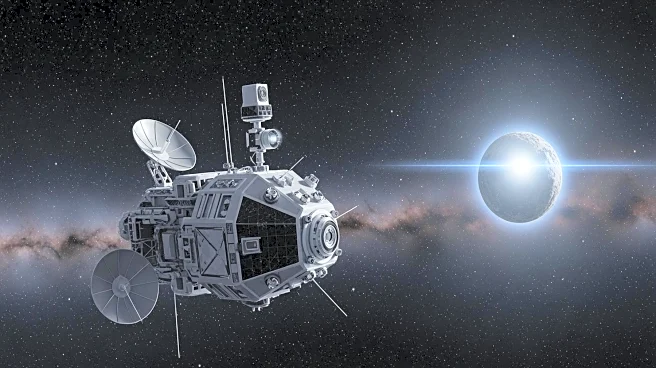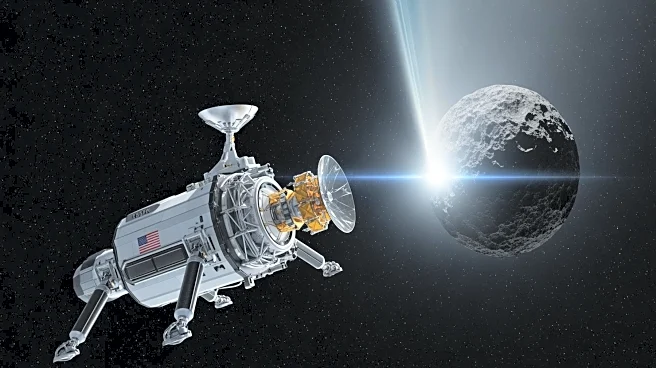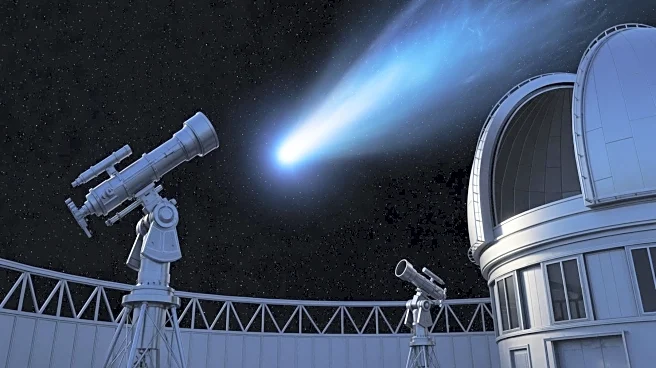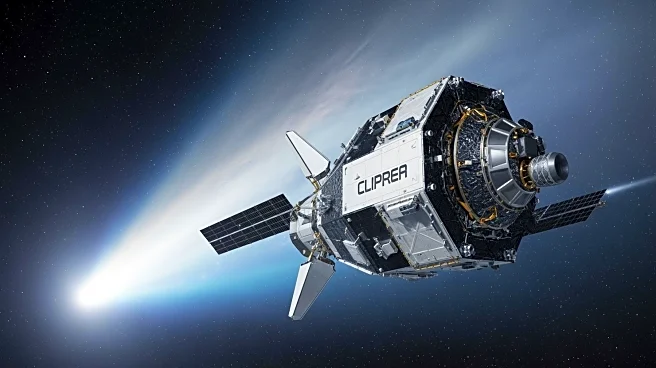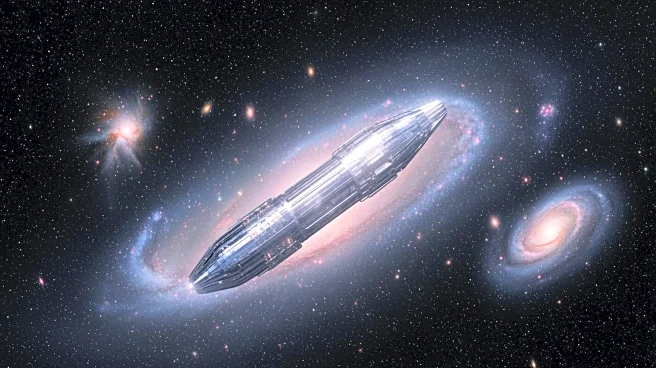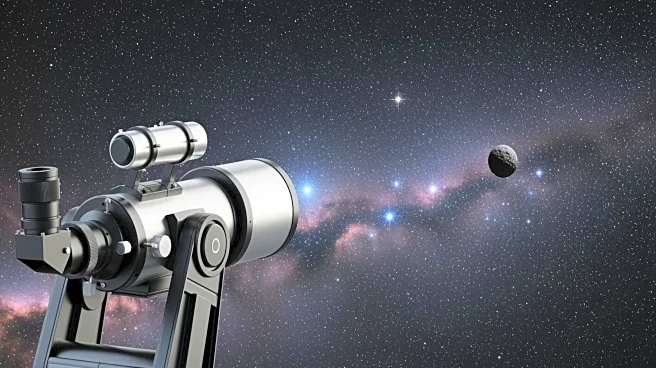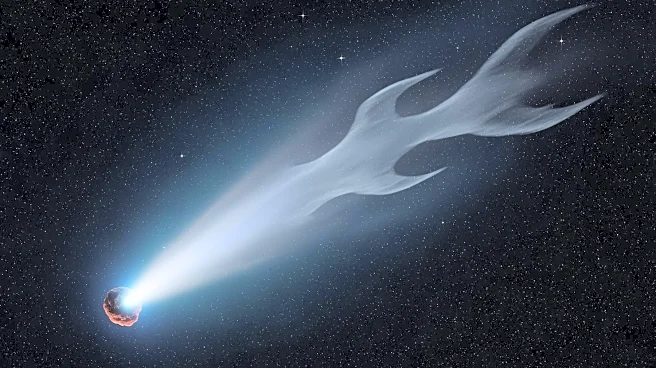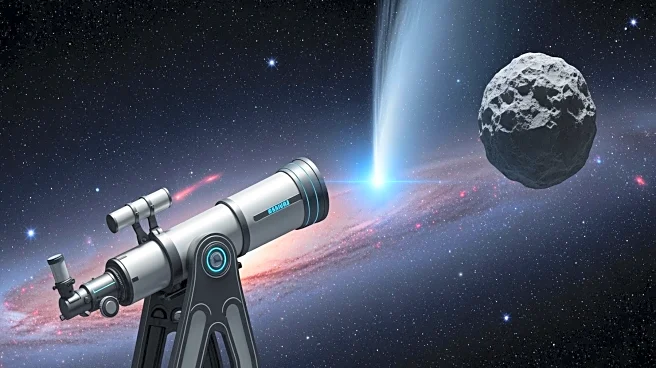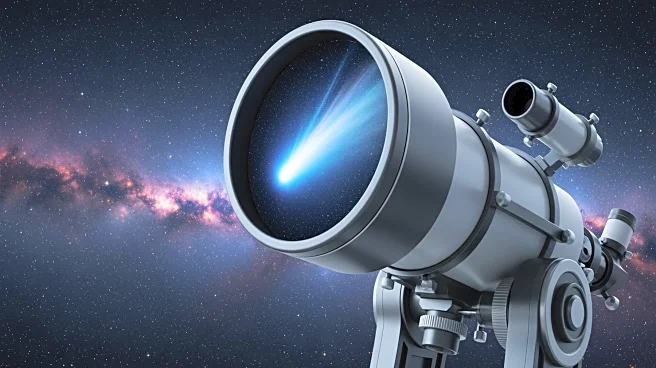What's Happening?
An interstellar object known as 3I/ATLAS is on course to pass close to NASA's Europa Clipper and the European Space Agency's Hera spacecraft between today and November 6. This event presents a unique opportunity
for scientists to study the ion tail of an interstellar comet, a phenomenon rarely observed. The Tailcatcher program has calculated that the spacecraft will come within approximately five million miles of the comet's charged particle stream. This encounter allows researchers to gather data on the interior of interstellar comets and the star systems that formed them, which is currently limited. The object has displayed unusual characteristics, such as an 'anti-tail' and the release of specific metals, leading to speculation about its origins.
Why It's Important?
The close approach of 3I/ATLAS to the Europa Clipper and Hera spacecraft is significant for scientific research, as it provides a rare chance to study material from another star system. Understanding the composition and behavior of interstellar objects can offer insights into the formation and evolution of star systems beyond our own. The peculiar characteristics of 3I/ATLAS, including its anti-tail and metal emissions, challenge conventional comet behavior and may lead to new theories about interstellar phenomena. The event also highlights the importance of international collaboration in space exploration, as global observation efforts are planned to track the object's trajectory and gather comprehensive data.
What's Next?
In the coming days, the Europa Clipper will lead the observation efforts, equipped with instruments to study plasma and magnetic fields. A global observation exercise is scheduled from November 27 to January 27, during which telescopes and tracking systems worldwide will focus on 3I/ATLAS to refine methods for determining its celestial position. The International Asteroid Warning Network has added 3I/ATLAS to its tracking list, marking the first interstellar object ever included. This initiative underscores the challenges and importance of accurately charting the paths of such objects, which could have implications for future space missions and planetary defense strategies.
Beyond the Headlines
The encounter with 3I/ATLAS raises intriguing questions about the nature of interstellar objects and their potential origins. Harvard professor Avi Loeb has suggested that the comet could be an alien probe, citing its unusual trajectory and behavior. This hypothesis, while speculative, highlights the broader scientific curiosity and debate surrounding the search for extraterrestrial life and technology. The event also emphasizes the need for advanced tracking and observation technologies to better understand and predict the movements of interstellar objects, which could have long-term implications for space exploration and security.
